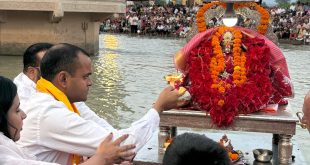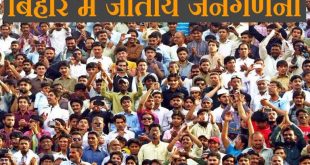Presidential election: The results of the assembly elections in 5 states of the country, declared on Thursday, have put the BJP in a strong position in the presidential elections to be held this year.
Political analysts say that with the BJP’s big victory in UP, PM Narendra Modi will have ample opportunity to decide on the successor of President Ram Nath Kovind. The term of President Ram Nath Kovind will end on July 24, 2022.
If the results of the elections in UP had gone in favor of the Samajwadi Party, the BJP would have had to rely on the support of parties like Biju Janata Dal, Telangana Rashtra Samithi, YSR Congress Party.
Former General Secretary of Lok Sabha P Sreedharan said that after the bumper victory in UP, now the National Democratic Alliance (NDA) has the advantage. A political analyst said the string of victories in Uttar Pradesh, Uttarakhand, Goa and Manipur has made the presidential election easier for the BJP.
To create a split in the BJP-led NDA, the NCP has proposed the name of Bihar Chief Minister Nitish Kumar as the joint opposition candidate in the presidential election. However, the big question is whether he will part ways with the BJP.
At the same time, a section of the opposition had projected NCP chief Sharad Pawar as a possible candidate for the presidential election. However, the discussion on this did not progress much further. Meanwhile, TRS President and Telangana Chief Minister K Chandrasekhar Rao also met some opposition leaders on the issue of Presidential elections.
Let us inform that there are a total of 4,896 in the electoral college formed for the presidential election. These include 233 members of Rajya Sabha, 543 of Lok Sabha and 4,120 members of Legislative Assemblies. Members of Legislative Councils and nominated members are not part of the electoral college. In these, the value of each MP’s vote is fixed at 708. Whereas in the states the value of the vote of an MLA is fixed in proportion to the population there.
Maximum votes of UP MLAs
Due to being the largest population in the country, the vote value of the MLAs of UP is the highest at 208. Thus the total value of votes of UP assembly is 83,824, Punjab 13,572, Uttarakhand 4480, Goa 800 and Manipur 1080.
This is how the President is elected
Presidential elections follow the system of proportional representation by means of the single transferable vote. The value of each vote is predetermined in proportion to the population of the respective state on the basis of the 1971 census. Under this, the total value of the electoral college with 4,896 electors is 10,98,903. To win the election, the candidate has to get at least 50 percent of the additional votes.
 Indian Thought Latest News & Views
Indian Thought Latest News & Views



